
By Ian Cushway
26th June, 2018
|
Brake fluid essentials
Everything you need to know about why, when and how to change it.
Talk about a high pressure job! You have to admit, brake fluid certainly has its work cut out. When you stamp on the middle pedal it’s instantly called upon to bring things safely to a halt in a hurry, which is quite a responsibility. Yet, despite costing buttons to buy, unlike other car components with a limited lifespan, it’s easily ignored. And that can lead to expensive repairs further down the line, if you’re not too careful.
Braking bad
The thing is, despite being virtually incompressible with a high boiling point, brake fluid is hygroscopic – it gradually absorbs moisture which permeates through the rubber hoses, seals and via various fittings. And as soon as moisture’s been absorbed, the fluid becomes less efficient at its job. Just as importantly, the moisture can corrode the brake system’s internals, causing caliper pistons to seize and metal brake pipes to rust from the inside. So, you’ve got it, that’s why brake fluid should be religiously replaced every two years.
Filling in the DOTs
Brake fluids must comply with North American DOT specification and most cars use either DOT 3 or DOT 4 glycol ether-based types. The latter has a slightly higher boiling point and is said to absorb less water, so it is often seen as an upgrade for cars that were originally designed to use DOT 3.
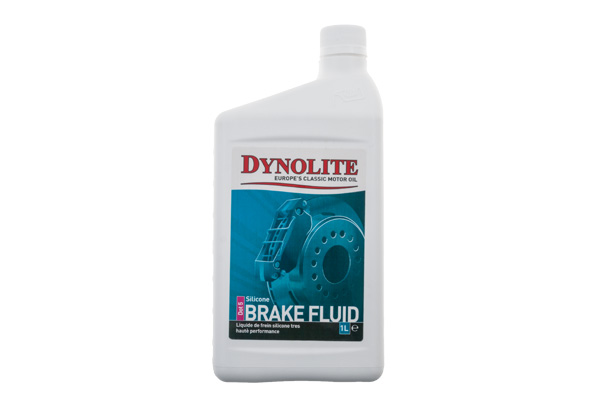
Dynolite Silicone DOT 5 Brake Fluid #GGL862110. Credit: Image source - Moss Europe Ltd.
DOT 5.1 has an even higher boiling point, but is considerably more expensive to buy and really only meant for competition cars. Silicon-based fluids, like the one offered by Dynoliteget a DOT 5 classification. The benefit of these is that they don’t absorb moisture, making them ideal for classics that spend time off the road for long periods. Best of all, for that reason, you can instantly forget all we’ve just said about having to replace it because as long as no traditional glycol-based fluid is present, it will last the lifetime of the vehicle.
“Incidentally, don’t pay more for fluids that shout about being ‘synthetic’ – they are all synthetic."
Prime condition?
Fresh brake fluid is a light straw colour – but as it becomes contaminated with water or failing internal seals, it gradually darkens. Moreover, as moisture is absorbed, its boiling point becomes lower. There are specialist devices to assess its boiling point – but they’re expensive and only bigger garages are likely to have them. Either way, adhering to the two year regime regarding flushing the whole system through with new fluid is the best, fail-safe method of ensuring it’s still doing its job properly.
Some brake fluid reservoirs have a filter that traps debris, so make sure it’s clean before changing your fluid. And don’t forget, glycol-based brake fluid will strip paint in seconds so be careful of any drips. For show cars, that’s another reason to convert to a silicon-based brew instead!
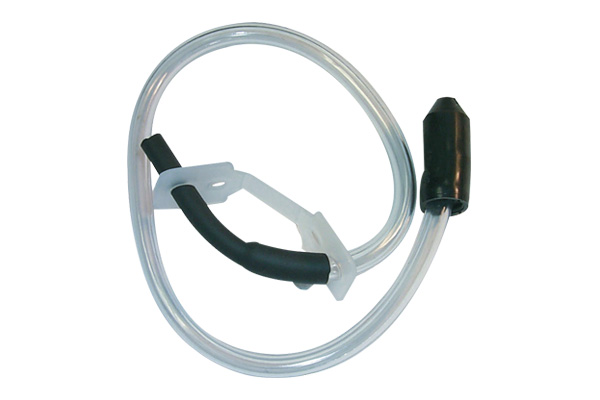
Visibleed Kit #GAC9378X. Credit: Image source - Moss Europe Ltd.
Let it bleed
Okay, so we’ve established that you will need to change the fluid on a regular basis. But what’s the best way to do it? There’s several ways to bleed brakes.
The conventional method is to ease a clear piece of flexible pipe over the bleed nipple, open it, and get a helper to pump the brake pedal. You should start at the caliper furthest from the master cylinder and bleed each corner of the car, regularly topping up the level in the reservoir with fresh fluid as you go. The other end of the pipe must be immersed in clean brake fluid and your assistant instructed to hold their foot to the floor while you re-tighten the nipple to prevent air returning back into the system. A top tip here is to buy a Visibleed Kitwhich has a one-way valve at the end of the pipe which saves the hassle of doing this. Bubbles indicate the presence of air, all of which must be bled through otherwise the pedal will feel ‘spongy’. Once you’ve done this, the brake pedal should feel nice and firm and not need pumping.
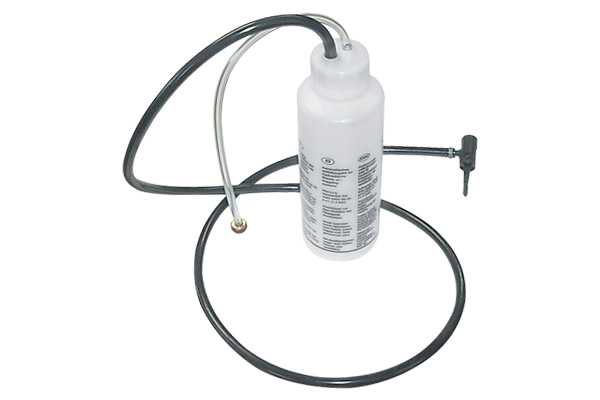
Eezibleed Kit #MRD1001. Credit: Image source - Moss Europe Ltd.
If you can’t find anyone to help, go for the Eezibleed Kit which enables you to bleed the brakes on your own using compressed air from a car tyre. There’s a reduced risk of damaging the master cylinder seal, which can happen when the brake pedal is fully depressed when using one of these.
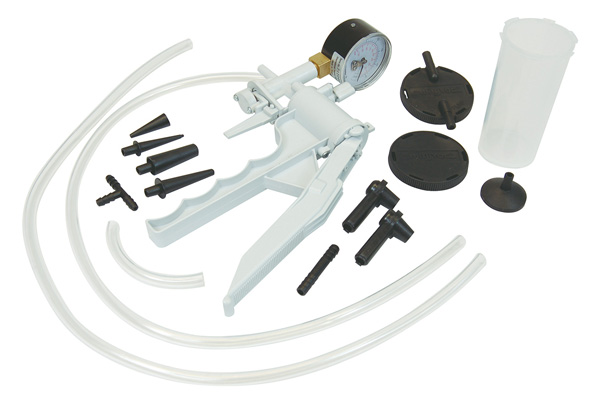
Mityvac Bleeding Kit #386-215. Credit: Image source - Moss Europe Ltd.
Instead of pressure bleeding brakes, you can vacuum bleed them using the Mityvac Bleeding Kit. The principle is just the same, but instead of pushing fluid through the system, you draw it out using a hand-held pump.
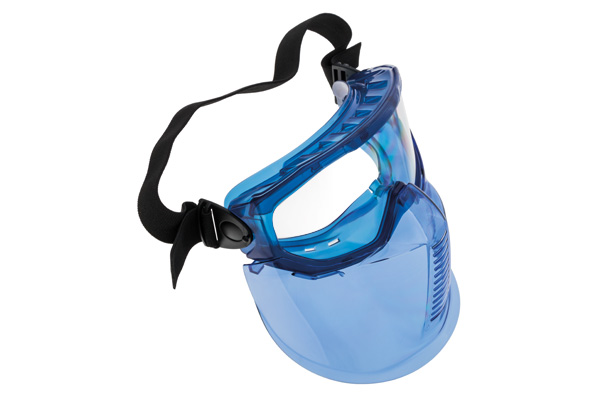
Safety Goggles #MTR524108. Credit: Image source - Moss Europe Ltd.
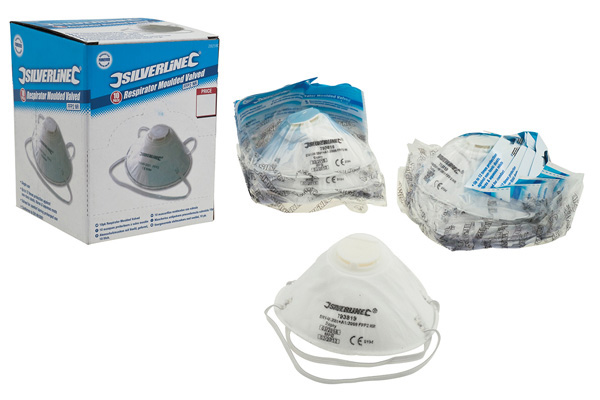
Dust Masks #MTR921501. Credit: Image source - Moss Europe Ltd.
What else?
Finally, there’s a few other golden rules when it comes to maintaining brakes. One is to always wear gloves, safety goggles and a dust mask when taking brake components apart or replacing discs, shoes or pads. Another is to always replace items in pairs. So never replace a single brake shoe or disc in isolation – do the one on the other side at the same time. This also applies to flexible hoses as a new one is likely to behave differently when under pressure to the old one fitted to your car, causing unequal braking. Oh, and if you notice excessive pedal travel, pulling to one side, juddering or strange, metallic noises, investigate immediately. After all, you’ll be wanting your stoppers to be as effective as possible if you need them in a hurry!

Keep up with all the latest from Moss Europe on our social pages
|
|


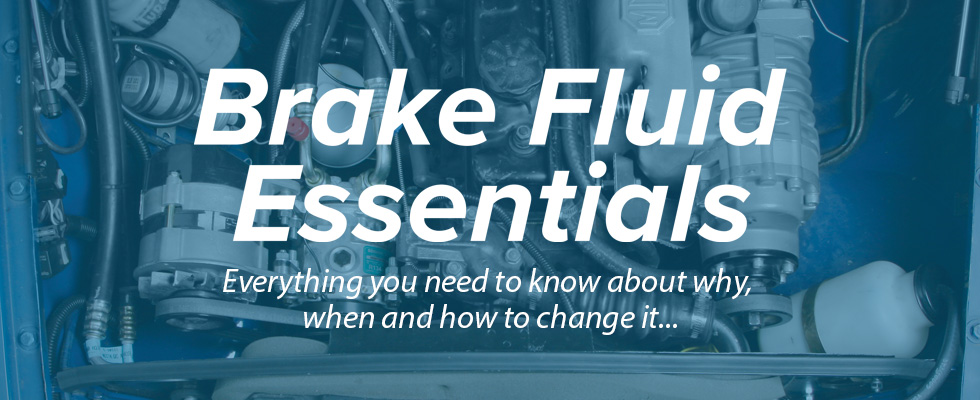










